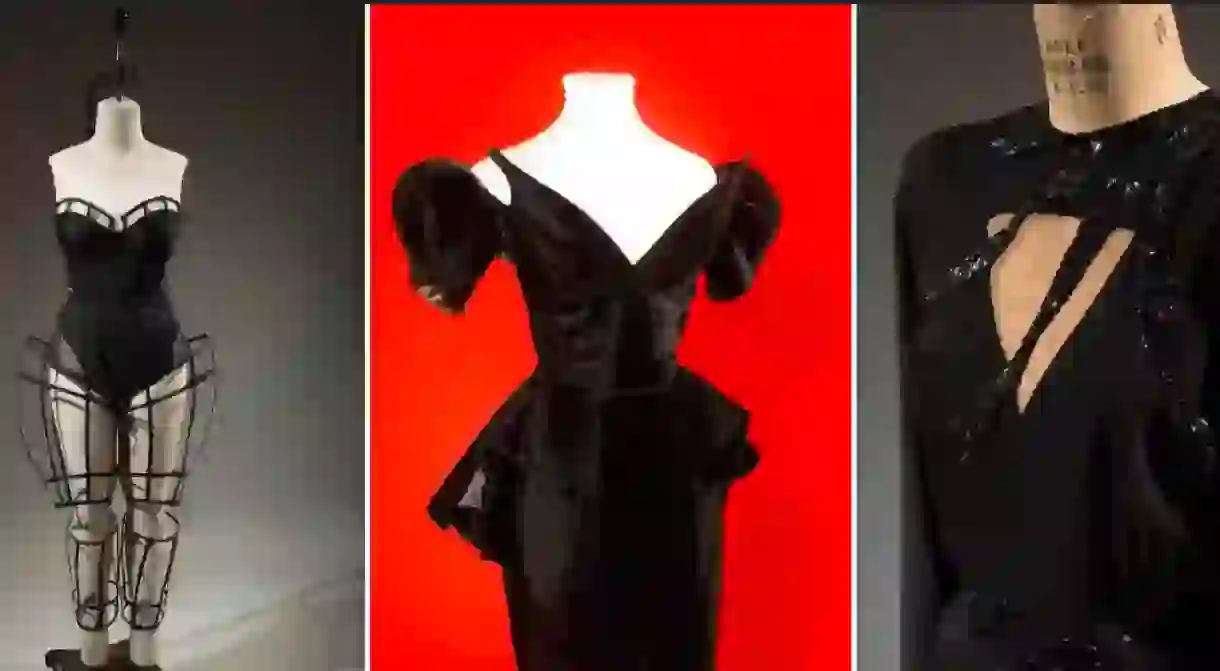The Museum at the Fashion Institute of Technology Explores the Body

This December, The Museum at the Fashion Institute of Technology opens The Body: Fashion and Physique, an exhibition that investigates the complex history of the “ideal” body in fashion. By looking at the relationship between the fashion industry and body politics from the 18th century to the present, the show serves as commentary on the pursuit of the “perfect body.”
The Body: Fashion and Physique exhibit features more than “50 objects from the museum’s permanent collection, many of which have never been on view,” according to museum’s press release. “Within the exhibition, garments are supplemented with images from the popular press, fashion media, film, and other sources to highlight how the fashion industry has contributed to the marginalization of certain body types within our culture.”

Garments like corsets (including a maternity corset and child corset) from the 18th century are on view alongside the spring 2015 collection from this year’s Council of Fashion Designers of America (CFDA) award winner, Becca McCharen-Tran of Chromat. This particular collection riffs on historical undergarments, demonstrating McCharen-Tran’s shifting the conversation to look at a mobile body of all shapes.

“The internet and social media have opened up the [fashion] industry, giving bloggers and consumers a much more powerful voice to challenge normative body ideals and expand our notion of what a fashionable body is,” says Emma McClendon, who curated The Body: Fashion and Physique. “Increasingly there is no single ideal fashionable body.”

The “fashionable body” McClendon refers to is, of course, a social construct perpetuated by the fashion industry in magazine editorials and catwalks throughout the globe. Body politics, or the relationship between professionals in the fashion industry and the consumers of fashion (anyone who wears clothing), is a complex dynamic.
In a world that profits from self-doubt (take, for example, shape-wear like Spanx, as well as the uptick in millennial plastic surgery), it is often said that being yourself is, in fact, a form of rebellion.

McClendon picks up on this point, as she presents an inclusive version of body politics when talking about the exhibit, which ends with transformational moments in 21st-century fashion, including a Christian Siriano couture dress for plus-size actress Leslie Jones.
It’s hard to believe that in 2016, when Jones walked the red carpet in this dress, archaic ideas surrounding body image still governed many of the fashion elite. However, 2017’s “Year of the Silence Breakers” might just be a watershed moment for women, with such constraints soon holding little or no validity in the body politics sphere.
The Body: Fashion and Physique is organized by Emma McClendon, associate curator of costume. It is on view from December 5, 2017 to May 5, 2018.
27th Street at 7th Avenue. Museum hours: Tuesday–Friday, noon–8 p.m.; Saturday, 10 a.m.–5 p.m. Closed Sunday, Monday, and legal holidays. Admission is free. The Body: Fashion and Physique is supported by the Couture Council.













